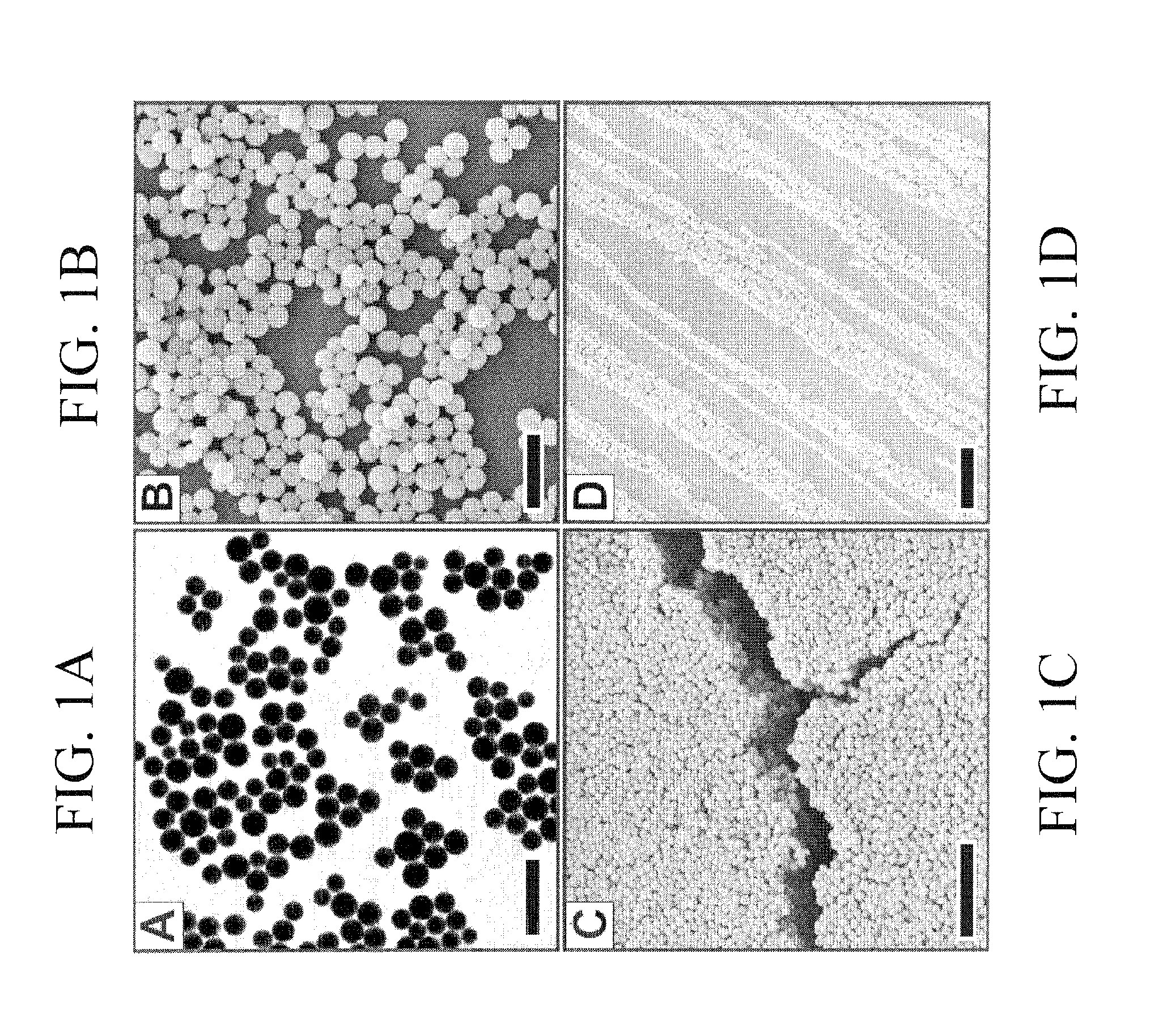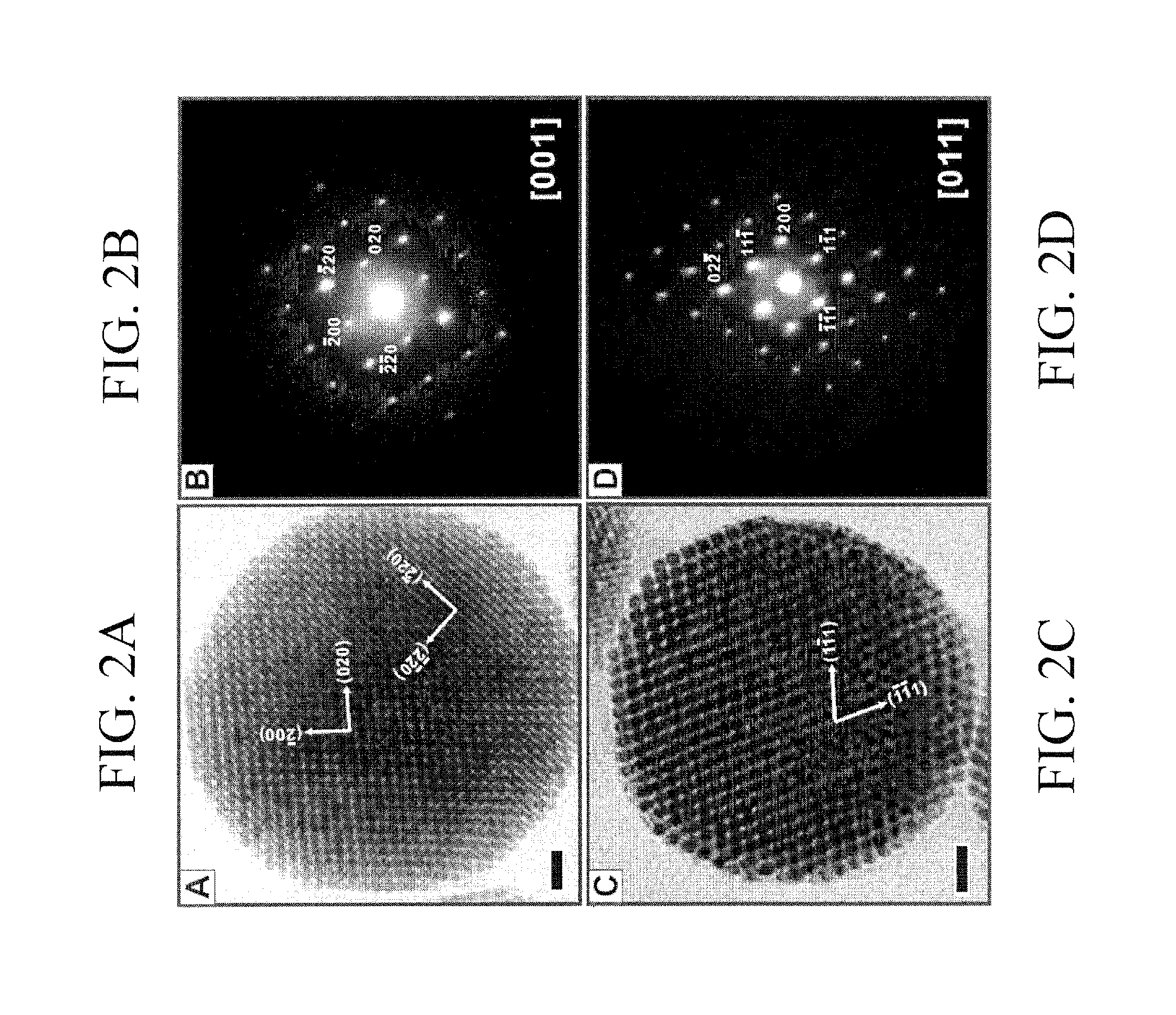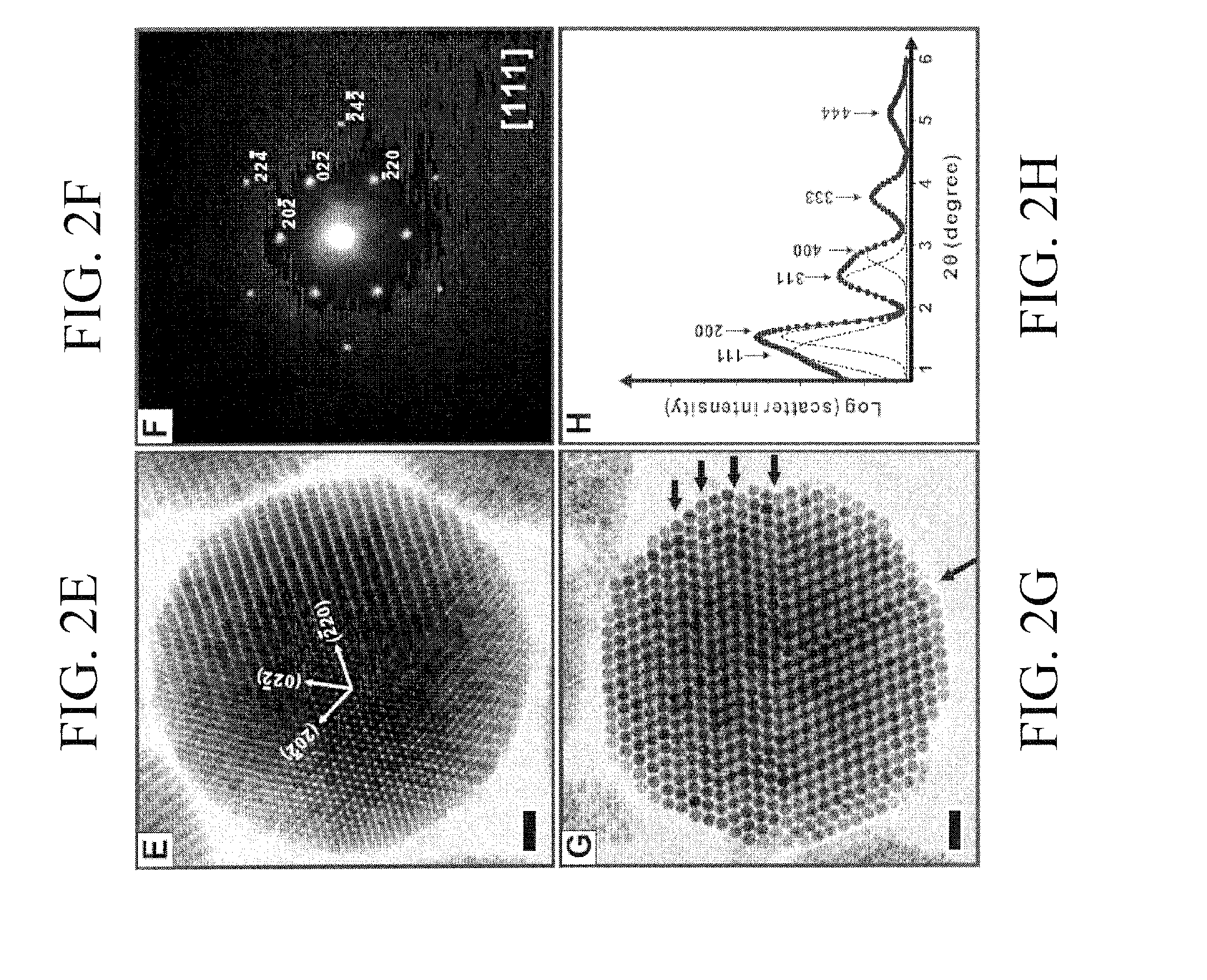Supercrystalline Colloidal Particles and Method of Production
a colloidal particle and supercrystalline technology, applied in the direction of peptide/protein ingredients, dna/rna fragmentation, inorganic non-active ingredients, etc., can solve the problems of inability to synthesize and shape-controlled nanoparticle superlattices, poor size distribution, and inability to manufacture nanoparticle assemblies made by these existing approaches
- Summary
- Abstract
- Description
- Claims
- Application Information
AI Technical Summary
Benefits of technology
Problems solved by technology
Method used
Image
Examples
embodiment 1
[0069]A method for synthesizing colloidal superparticles (SPs), comprising:
[0070]mixing a first solution comprising ligand-functionalized nanoparticles with a surfactant under aqueous conditions to form a second solution comprising nanoparticle-micelles;
[0071]mixing the second solution with a solvent (such as a polar organic solvent, e.g., ethylene glycol, di-ethylene glyocol, tri-ethylene glycol, and / or an oxygen-containing organic solvent) to form a third solution comprising colloidal SPs;
[0072]crystallizing the superparticles to form superlattices within the SPs; and
[0073]isolating the SPs from the third solution.
embodiment 2
[0074]The method of embodiment 1, wherein said crystallizing comprises heating the third solution to a temperature and for a period of time (e.g., about 0.5 to 4 hours) sufficient to result in crystallization and formation of superlattices within the SPs.
embodiment 3
[0075]The method of embodiment 1, wherein said isolating comprises allowing the third solution to cool to a temperature of about 15° C.-30° C. (e.g., room temperature) and centrifuging the third solution to precipitate colloidal SPs.
PUM
| Property | Measurement | Unit |
|---|---|---|
| diameter | aaaaa | aaaaa |
| diameter | aaaaa | aaaaa |
| diameter | aaaaa | aaaaa |
Abstract
Description
Claims
Application Information
 Login to View More
Login to View More - R&D
- Intellectual Property
- Life Sciences
- Materials
- Tech Scout
- Unparalleled Data Quality
- Higher Quality Content
- 60% Fewer Hallucinations
Browse by: Latest US Patents, China's latest patents, Technical Efficacy Thesaurus, Application Domain, Technology Topic, Popular Technical Reports.
© 2025 PatSnap. All rights reserved.Legal|Privacy policy|Modern Slavery Act Transparency Statement|Sitemap|About US| Contact US: help@patsnap.com



